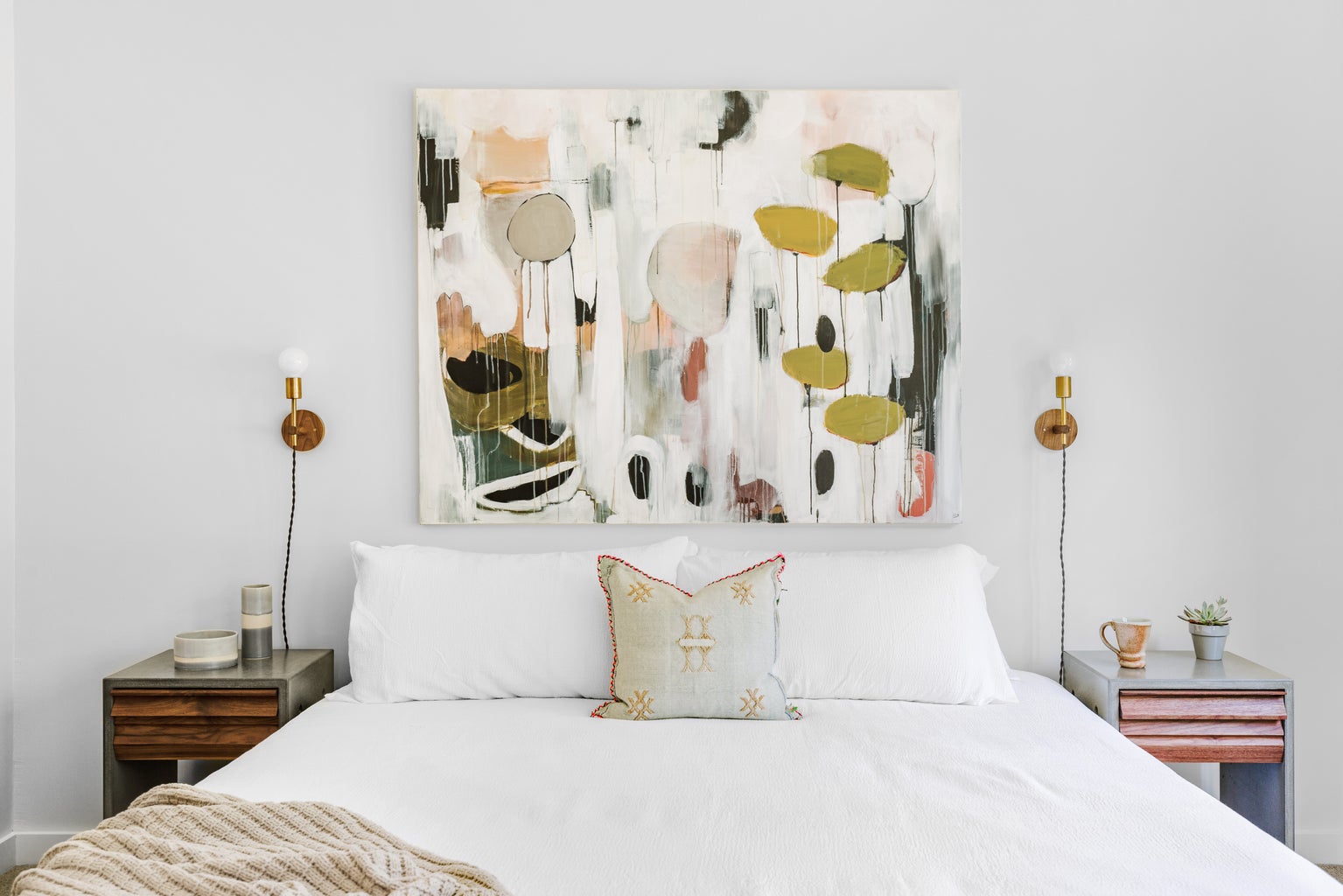Where are you reading this article? In bed in your dorm room? Outside, lying in the hammock you bought just for moments like these? Maybe you’re sitting in your chair, at your desk, with the lamp that you snagged for 20% off at the Bed Bath & Beyond sale casting a glow over this academic scene.
In my household, when you got accepted into college there were two very obvious next steps: the first was setting up a FAFSA account, and the second was taking a trip to Bed Bath & Beyond. Ours was located on the right side of Route 9, next to the UNOs and before the mall. The first time I went I was 8 years old, shopping for my older sister’s big move to D.C. The second time I was 14, shopping for my other older sister’s move to UMass Amherst. When it was my turn, I grabbed that famous, giant blue coupon and headed to the store that would dictate my college aesthetic for the next four years.
Chances are the blanket you’re wrapped in is not from Bed Bath & Beyond. It’s probably from HomeGoods, or HomeSense, or an obscure market in your hometown. Surprisingly enough, when I move into my next place, I won’t go to Bed Bath & Beyond because the store on the right side of Route 9, next to the UNOs and before the mall, doesn’t boast an array of home appliance deals on its windows. No, now there’s one yellow sign and it reads “For Lease”.
What happened to Bed Bath & Beyond?
Bed Bath & Beyond was founded in 1971, and at its prime, it boasted a thousand locations across the United States, with a store in practically every state. It was known for its large amounts of inventory that ranged from blenders to bath mats, and its competitive pricing that allowed customers to purchase name brand items at a great value. Bed Bath & Beyond was a “category killer”, and each of its locations was curated by the store managers who worked there, creating an environment made for the clientele of that region. When you walked into a Bed Bath & Beyond you were sure to find what you needed and highly probable to walk out with something you didn’t.
However, convincing customers to buy was reliant on its physical presence. Bed Bath & Beyond leaned on their stores and stacks of products in order to sell whatever the customer wanted whenever they needed it. Similar to Blockbuster, the store’s array of choices drew us in. Also like Blockbuster, Bed Bath & Beyond lacked an omnichannel marketing focus; their e-commerce was lackluster compared to their in-store experience.
Although Bed Bath & Beyond “boasted” inventory, the company had a culture of frugality. While the retail industry was busy making investments into their websites and refining their supply chain to support online orders, Bed Bath & Beyond was telling their employees to pay for their own Post-it Notes. In 2018, the company experienced their first decline in 27 years. The year afterwards, a new CEO, Mike Triton, was elected to return the home goods giant back to its former glory. Triton began making changes right away. He closed underperforming stores, cut jobs, and pledged to (finally) invest in Bed Bath & Beyond’s technology and operations. He also was keen to introduce private label brands.
Walmart’s Great Value or Target’s Universal Thread are private labels, in-house brands that only the retailer sells. Many companies choose to introduce private labels because they can be sold cheaper than name-brand products and retailers can take a larger cut of the profits. In fact, Triton was the right person to introduce this strategy – after all he had introduced 35 private label brands during his tenure at Target. He stated in October 2020 that the company would launch 10 brands in eighteen months. That is a huge feat. For comparison, it usually takes years, sometimes an entire decade, to build a brand.
After all, a brand is much more than just a name. Behind a brand is an entire production team of employees focusing on who is going to buy this brand, the design of the products, and the shipping of these goods to their final destinations. Successful brands are built on consumer market insights that can forecast trends that will keep a brand on top of its competition for years to come. While Triton was trying to institute these private labels, the world was in the midst of a pandemic. In addition to dealing with the nuances of brand management, there were a whole host of logistical challenges to overcome such as shipping delays, factory closings, and supply chain bottlenecks. As Bed Bath & Beyond scaled back some of their deals with brands like OXO, they could not replace their inventory with their private label products, leaving shelves empty and customers dissatisfied.
Once the product finally came in, there was no change in customer satisfaction. Even though shelves were overflowing, Bed Bath & Beyond clientele were disappointed by the private label, complaining that the products were too generic and too flimsy. Despite being significantly cheaper, customers preferred brands like OXO because they had meaning. The consequence of fast-tracking the development of private labels was replaceable brands lacking enough equity to succeed. Customers saw through these private labels and went elsewhere to purchase unique products. In June 2022, Triton left Bed Bath & Beyond.
Today, Bed Bath & Beyond is searching for a reason to exist. As a category killer, its stores serve to give their customers everything and anything, but in the world today, consumers are in search of individualization and brands that echo their values. In order to keep delivering to customers and shareholders and stay afloat, the company has to answer the question, why Bed Bath & Beyond?
Can’t get enough of HC UMass Amherst? Be sure to follow us on Instagram, listen to us on Spotify, like us on Facebook, and read our latest Tweets!






